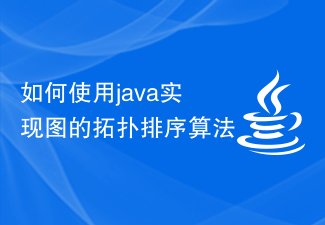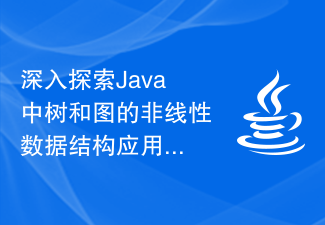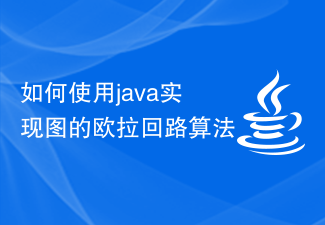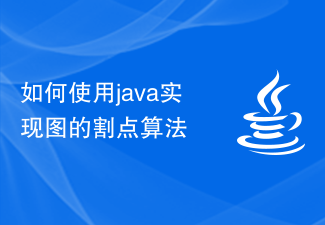Author: Crypto Koryo
Compiled by: Frank, Foresight News
The TVL of Liquidity Recollateralized Token (LRT) has reached $3.6 billion, which is undoubtedly the most promising in 2024 one of the narratives.
So, what exactly are the re-staking addresses doing? How do they allocate funds? Where Farming? Which LRT protocols are most commonly used?
In order to solve these problems, this article will use 10 exclusive charts to introduce and analyze the behavior of re-pledged addresses from a comprehensive perspective (Note: All data comes from the "LRT whales" dashboard on Dune) .

1. First deposit address category of LRT protocol
View the LRT deposit addresses in all related protocols, as well as their first LRT deposit, We will find a clear trend, that is, there are three main groups among them.
- Visionaries - December 2023;
- Early Majority - late January 2024;
- Late Majority - Early January 2024;
BTW, this is a very common pattern that can be seen early in the development of many protocols/narratives .

2. Total number of LRT deposit addresses and deposit strategy
So far, about 140,000 wallet addresses have deposited funds into the LRT protocol.
How many protocols do they deposit, and how much do they deposit on average (median)? The vast majority of people have made deposits in more than 1 protocol, and the deposit amount is less than 1 ETH.

Some ambushing airdrop farmers are depositing as much as they can into the LRT protocol - although this is only a minority and not the most popular farming strategy.
Among them, a certain address starting with 0xd6d3 has been deposited in all 11 LRT protocols.
3. Deposit amount of re-pledge address
How much money is deposited in the re-pledge address?
If we exclude the top 5% of whales by deposit amount, we will find that the vast majority of wallet addresses have deposit amounts of less than 2 ETH - these wallets are ambushing EigenLayer related airdrops and maximizing their promotion number of points.

4. Number of addresses in each deposit amount range
Among them, there are 147 wallet addresses that have deposited more than 1,000 ETH into the LRT protocol. Some of these are wallets associated with individual protocols, and there are addresses like analytico.eth that split funds into multiple LRT protocols.

5. ENS word cloud of re-staking address
If you pay attention to the LRT narrative, you should be familiar with the ENS names of some of the LRT whales (size and Proportional to the total deposit amount):
- analytico.eth
- vladilena2.eth
- Christian2022
- luggis.eth
- czsamsunsb.eth
- 58bro.eth

6. Research on addresses ranked by deposit amount
We can rank the addresses according to the total deposit amount Rank the LRT deposit addresses and then define different groups based on the rankings.
We observe that wallet addresses ranked >1000 generally deposit into more protocols, while 94% of wallet addresses ranked

7.Protocol Loyalty
On average, users who deposited to ether.fi and Puffer only rescheduled on 1.41 protocols (on average) staking, which shows their confidence in both protocols.
However, users depositing into smaller protocols like Bedrock, Genesis, and Inception are indeed decentralized farming and diversifying their bets.

8. Contribution of giant whales
This is a very interesting place, we can study how much of the total TVL of each LST protocol comes from the top 30 Name deposit address - the lower this ratio, the healthier and more decentralized the liquidity of the corresponding LST protocol.
And TVL’s largest LRT protocol, ether.fi, ranks first in the degree of decentralization measured by this data!

9. Relevance matrix of LRT protocols
What other LST protocols are commonly used by depositors of a certain LST protocol?
The data shows that ether.fi depositors also tend to deposit to Kelp and Puffer (and vice versa), so there are some interesting correlations here.

10. LRT protocol correlation matrix for different deposit addresses
We can define different groups and conduct a deeper analysis.
For the Shrimp queue (total deposit amount less than 2 ETH), the most popular LRT associated protocols are ether.fi and Puffer, but for the Dolphin queue (between 20 and 100 ETH) Generally speaking, the most popular LRT associated protocols are ether.fi and Kelp.

The above is the detailed content of 10 pictures to help you gain insight into the current situation of the LRT track. For more information, please follow other related articles on the PHP Chinese website!
 如何使用C++中的Prim算法Sep 20, 2023 pm 12:31 PM
如何使用C++中的Prim算法Sep 20, 2023 pm 12:31 PM标题:C++中Prim算法的使用及代码示例引言:Prim算法是一种常用的最小生成树算法,主要用于解决图论中的最小生成树问题。在C++中,通过合理的数据结构和算法实现,可以有效地使用Prim算法。本文将介绍如何在C++中使用Prim算法,并提供具体的代码示例。一、Prim算法简介Prim算法是一种贪心算法,它从一个顶点开始,逐步扩展最小生成树的顶点集合,直到包
 如何使用java实现图的拓扑排序算法Sep 19, 2023 pm 03:19 PM
如何使用java实现图的拓扑排序算法Sep 19, 2023 pm 03:19 PM如何使用Java实现图的拓扑排序算法引言:图是一种非常常见的数据结构,在计算机科学领域有着广泛的应用。拓扑排序算法是图论中的一种经典算法,它可以对有向无环图(DAG)进行排序,从而确定图中各个节点之间的依赖关系。本文将介绍如何使用Java编程语言来实现图的拓扑排序算法,并附带具体的Java代码示例。一、定义图的数据结构在实现拓扑排序算法之前,我们首先需要定义
 如何使用java实现图的哈密顿回路算法Sep 21, 2023 am 09:03 AM
如何使用java实现图的哈密顿回路算法Sep 21, 2023 am 09:03 AM如何使用Java实现图的哈密顿回路算法哈密顿回路是一种图论中的计算问题,即在给定的图中找到一条包含所有顶点的闭合路径。在这篇文章里,我们将详细介绍如何使用Java编程语言实现哈密顿回路算法,并提供相应的代码示例。图表示首先,我们需要使用适当的数据结构来表示图。在Java中,我们可以使用邻接矩阵或邻接链表来表示图。这里我们选择使用邻接矩阵来表示图。定义一个名为
 PPT设置两幅图同时做动画效果的操作方法Mar 26, 2024 pm 08:40 PM
PPT设置两幅图同时做动画效果的操作方法Mar 26, 2024 pm 08:40 PM1、双击打开测试文档。2、点击工作去创建第一个ppt文档后,点击菜单的插入--图片--来自文件。3、选择我们插入的文件,点击插入。4、同样方法再插入一个,拖动调整两幅图片到合适位置。5、同时选中两幅图片,点击右键--组合--组合,使得两幅图成为一体。6、选中合并后的图形,点击右键--自定义动画。7、点击添加效果,选择一种效果,点击确定,这时看PPT,就会发现两幅图片一起动了。
 深入探索Java中树和图的非线性数据结构应用和实现方法Dec 26, 2023 am 10:22 AM
深入探索Java中树和图的非线性数据结构应用和实现方法Dec 26, 2023 am 10:22 AM理解Java中的树和图:探索非线性数据结构的应用与实现引言在计算机科学中,数据结构是计算机中存储、组织和管理数据的方式。数据结构可以分为线性数据结构和非线性数据结构。树和图是非线性数据结构中最常用的两种类型。本文将重点介绍Java中树和图的概念、应用和实现,并给出具体的代码示例。树的概念与应用树是一种抽象数据类型,由节点和边组成的集合。树的每个节点包含一个数
 如何使用java实现图的欧拉回路算法Sep 19, 2023 am 09:01 AM
如何使用java实现图的欧拉回路算法Sep 19, 2023 am 09:01 AM如何使用Java实现图的欧拉回路算法?欧拉回路是一种经典的图论问题,其本质是寻找一条路径,能够经过图中每条边一次且只能一次,并且最终回到起始节点。本文将介绍如何使用Java语言来实现图的欧拉回路算法,并提供具体的代码示例。一、图的表示方式在实现欧拉回路算法之前,首先需要选择一种适合的图的表示方式。常见的表示方式有邻接矩阵和邻接表。在本文中,我们将使用邻接表来
 使用C++找到图中的汇节点的数量Sep 01, 2023 pm 07:25 PM
使用C++找到图中的汇节点的数量Sep 01, 2023 pm 07:25 PM在本文中,我们将描述解决图中汇节点数量的重要信息。在这个问题中,我们有一个有N个节点(1到N)和M个边的有向无环图。目标是找出给定图中有多少个汇节点。汇聚节点是不产生任何传出边的节点。这是一个简单的例子-Input:n=4,m=2Edges[]={{2,3},{4,3}}Output:2寻找解决方案的简单方法在这种方法中,我们将遍历图的边,将边所指向的集合中的不同元素推入其中,然后减去集合的大小存在的节点总数。示例#include<bits/stdc++.h>usingnamespa
 如何使用java实现图的割点算法Sep 20, 2023 pm 12:07 PM
如何使用java实现图的割点算法Sep 20, 2023 pm 12:07 PM如何使用java实现图的割点算法,需要具体代码示例图是离散数学中重要的概念之一,通过图的表示,可以描述出现在各种现实问题中的关系和连接。在图的相关算法中,寻找图的割点是一个具有挑战性的问题。图的割点也被称为关节点或割顶,指的是在一个无向连通图中,如果去掉某个顶点和与该顶点相关联的所有边,那么原来的图不再连通,这个顶点被称为割点。本文将介绍如何使用Java编程

Hot AI Tools

Undresser.AI Undress
AI-powered app for creating realistic nude photos

AI Clothes Remover
Online AI tool for removing clothes from photos.

Undress AI Tool
Undress images for free

Clothoff.io
AI clothes remover

AI Hentai Generator
Generate AI Hentai for free.

Hot Article

Hot Tools

EditPlus Chinese cracked version
Small size, syntax highlighting, does not support code prompt function

Safe Exam Browser
Safe Exam Browser is a secure browser environment for taking online exams securely. This software turns any computer into a secure workstation. It controls access to any utility and prevents students from using unauthorized resources.

Dreamweaver CS6
Visual web development tools

SublimeText3 Linux new version
SublimeText3 Linux latest version

mPDF
mPDF is a PHP library that can generate PDF files from UTF-8 encoded HTML. The original author, Ian Back, wrote mPDF to output PDF files "on the fly" from his website and handle different languages. It is slower than original scripts like HTML2FPDF and produces larger files when using Unicode fonts, but supports CSS styles etc. and has a lot of enhancements. Supports almost all languages, including RTL (Arabic and Hebrew) and CJK (Chinese, Japanese and Korean). Supports nested block-level elements (such as P, DIV),







